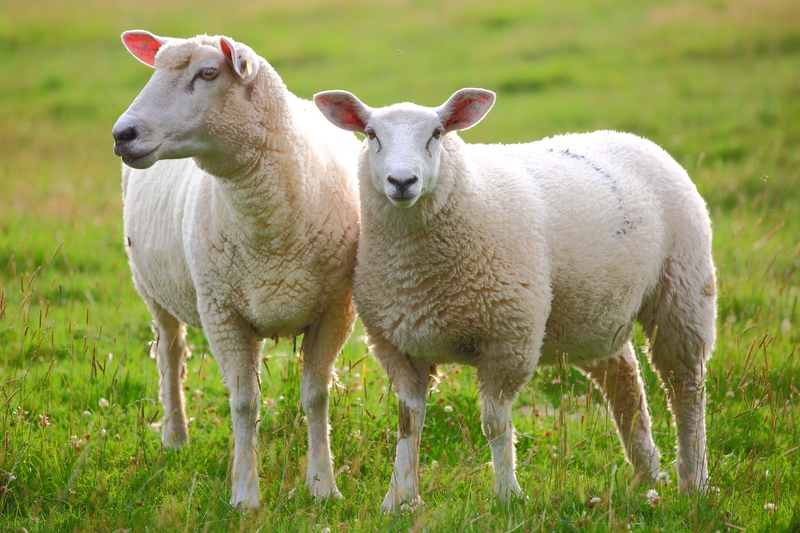By learning about these worms, you could be saving the lives of many of your animals. It's scary to realize what your animals could be digesting without you even knowing about it. What could start out as a few strange symptoms could quickly turn into a scary situation for your goats or sheep. Unfortunately, this type of worm is becoming increasingly prevalent amongst ruminant animals so it's the perfect time to learn how to identify signs of illness, adopt preventative measures and treat sick animals as quickly as possible.
What Are They?
Barber pole worm, or Haemonchus contortus, is a parasitic organism which thrives in the abomasum—or last stomach—of ruminants. It is highly contagious, often deadly, and once contracted is nearly impossible to eradicate.
Research revealed that my first order of business was saving the life of my goat.
A person in my goat network recommended I use a specific type of anthelmintic—the scientific term for a chemical de-wormer—called levamisole hydrochloride. Levamisole is available only via mail order in my state, but the lady happened to have some on hand and offered it to me at her cost.
Before continuing with information about barber pole worm, it is worth noting that I am not a veterinarian.
First, a few barber pole basics. It is the adult worms, striped like a barber pole, which take hold in the stomachs of ruminants. From there, they lay eggs which are passed out of the animal’s body through its feces. Once on the ground, the eggs develop into larvae and are ingested by ruminants as they graze.
Symptoms of Barber Pole Worm
Visible symptoms of the possible presence of barber pole worms include diarrhea, hanging tail, dull coat, lethargy and depression.
If barber pole worm progresses, edema—fluid buildup in body tissues—sometimes becomes visible, particularly in the face and jaw.
An excellent way to diagnose the presence of stomach worms is by determining whether the animal is anemic. This can be achieved using a diagnostic tool called “FAMACHA.” This is basically a chart showing how to compare the colors of the tissue under the lower eyelids of the animal—pink tissue means there is plenty of healthy blood flow and white means anemic.
Another excellent diagnostic method is a fecal exam. Many people learn to do it themselves. Training can be attained for little or no money, often from another ruminant owner. My state cooperative extension has begun to offer quarterly microscope training workshops.
It is important to be aware that fecal exams do not always tell the full story. When in doubt, always consult a veterinarian.
It is critical to catch barber pole early. Unchecked, it can be deadly.
As with most things, an ounce of prevention is worth a pound of cure. It is wise to screen new animals for parasites before putting them in with your existing herd.
Current school of thought recommends treating only sick animals. The reason for this is to avoid the risk of creating a medication-resistant super-organism.
Hot to Prevent Barber Pole Worm
When my goat was first diagnosed, I treated my entire herd. It was important at that time to make a complete break in the life cycle of the parasite. I carefully monitored the fecal egg counts after the first dose and treated only sick animals from there on.
Parasite activity is minimal in winter in cold climates.
Parasite eggs and larvae thrive best in warm humid conditions, multiply most easily in crowded conditions, are most plentiful close to the ground, and have a more profound effect on less healthy animals. Good parasite management includes:
- Keeping indoor quarters clean.
- Allowing ample space in the most-used paddocks.
- Rotating pastures and sticking to the highest and driest during damp seasons.
- Keeping hay and feed up off the ground by using hay and grain feeders.
- Hanging water buckets on walls to minimize spills and feces contamination.
- Keeping feed and water containers clean.
- Providing mid-level browse.
- Maintaining overall herd health.
- Staying abreast of any health changes in individual animals and within the overall herd, particularly during seasons when parasites are most prevalent.
- Doing fecal exams often.
- Being responsible regarding biosecurity: Use due diligence to prevent yourself and visitors from carrying barber pole worms to other farms.
Have you had experience with barber pole worms on your farm? Do you have advice for treating sheep and goats affected by them?
Article Source: Off The Grid News

anyone else love as much as me